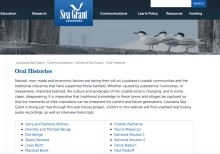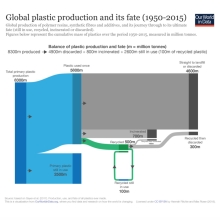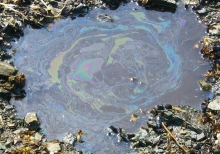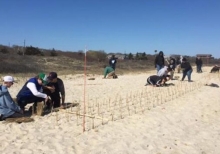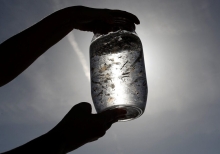Oral Histories
Whether caused by subsidence; hurricanes; or inexpensive, imported seafood, the culture and landscape of the coastal zone is changing, and in some cases, disappearing. It is imperative that traditional knowledge in these towns and villages be captured so that the memories of their custodians can be preserved for current and future generations. Visitors to this website will find unedited oral history audio recordings, as well as interview transcripts.
